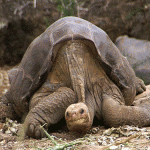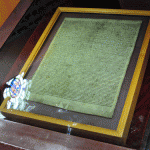
The predatory ladybird larva is disguised and protected by a woolly coat of wax filaments. Image: David Cappaert, Michigan State University.
Ladybird larvae are wolves in woolly clothing.
CSIRO researchers have revealed that the evolution of the diverse range of ladybirds comes down to the ability of their larvae poach ants’ food supply from under their noses. A reconstruction of the ladybird’s evolutionary history shows that their first shift was from eating hard-bodied scale insects s to soft-bodied scales.
Dr Ainsley Seago, a researcher with CSIRO’s Australian National Insect Collection, says that eating soft-bodied scales is an advantage for the ladybirds because they’re easier to eat, providing a more efficient food source for the predators. “Hard-bodied scales are covered with a tough dorsal shield and glue themselves to leaf surfaces, almost like the insect version of barnacles.
“By switching from hard to soft scales, the ladybirds can get more food per unit of energy expended.”
But switching to softer food comes with new challenges. The sap-eating scales are tended by ants, which guard them in return for sugary honeydew. The ants are aggressive when it comes to protecting their livestock and will attack any predator that threatens it.
Ladybird larvae were highly vulnerable to attacks, until they evolved to produce two anti-ant defences. The first is a woolly coat made of wax filaments, which Dr Seago says is almost impossible for the ants to bite through. “Imagine trying to eat an ice cream cone covered in raw wool.
“This “sheep’s clothing” also provides secondary protection from other predators and parasitoids, partly through camouflage/disguise, and partly because by blending in, the beetle larvae also get the same ant protection as the scale “˜herd’.”
The second defence are chemicals produced by the dorsal glands. These are aimed at drawing the attention of the ants, who communicate almost entirely through chemical/ olfactory signals.
“There have only been a few studies done on exactly how these chemicals affect the ants. Some are distasteful and repellent, while others may be a form of “˜olfactory camouflage’.”
It seems to be working, as most of the 6000 species in the ladybird family have one or both of these defences. “Early ladybirds first evolved to feed on hard scales instead of fungus, but didn’t do too well: none of the hard-scale-feeding ladybird groups are very diverse.
“An offshoot of this lineage then evolved the ability to feed on soft scales without getting destroyed by ants.”
Dr Seago says that most of the species diversity is within these groups. So the scale-eating groups are more successful than the species which later switched to another food source- such as pollen or leaves- and lost these defences.






